Book Creation Process: from Concept to Finished Book
A peek behind the curtain: How does a book get made?
As you might have heard me bleating about ceaselessly, my writing partner and I have a book coming out next week. It’s a nerve-wracking process, flinging a book into the world— so many things have to go right at the same time to give it any chance of success; and even then, a tariff, a news story on launch day, or a shipping issue could upend the entire enterprise.
We’re lucky so far, however! The book has been getting great early reviews and is now the #1 New Release for Comic Strips and Graphic Novels on Amazon!
When we’re collaborating, we have to kind of block out all of these things while we’re coming up with the thing to keep our spirits high and dive head-first into the process of writing and drawing the thing. So, today, I’m going to peel back the curtain (my studio doesn’t have a curtain, but you get it) on the most important parts of the process behind creating a book from scratch.
Before we kick off: If you like this kind of thing, you can subscribe to our podcast called “Is There Something In This?” which is our writers’ meeting for coming up with jokes and cartoons for the New Yorker. You can listen wherever you get your podcasts, or click here.
Research
The first part of the process involves looking at every other dog book we can find and making sure we don’t replicate what’s already been done, as well as learn from the incredible cartoonists who have done work with dogs before. I dove head-first into the incredible George Booth’s back catalogue, as well as the creator of the Mutts comic strip, Patrick McDonnell. They both have an incredible ability to capture the spirit of dogs in a way I don’t think anyone else can. (That said, I have also studied the work of Nick Galifianakis, Peter DeSéve, and
to see how they capture dogs, and somehow imbue them with human qualities without it feeling too hamfisted.)I make countless studies and sketches to get a sense of the level of abstractness in the cartoons- I want the dog breeds to be recognizable, but also feel like they have a unique look.
We have about 110 gags to draw, so the ideas have to match the style of the drawing— they need to be silly, but grounded in truth. The entire premise of the book sprouted from a stand-up bit I’d been doing about New Yorkers and was developed into a series. Here’s a short clip detailing the backstory:
Keeping Track of the Jokes and Avoiding Replication
Scott and I have our own process for coming up with these, which involves using the app “Miro,” which is kind of an infinite whiteboard with sticky notes (we did our first book using actual sticky notes, and it got… a bit messy.) Using Miro means we can work from anywhere. Including New York bars that let you bring laptops.
We draw on the experiences we’ve had as dog-owners over the years, we talk to friends, family members, strangers waiting for the bus, other people picking up poop on the street in the morning— anyone who can give us insights into how common these premises are understood to be. This is where Scott shines in the process—his ability to vacuum up slices of life, vet premises, and stress-test the veracity of the scenarios is unrivalled. He’s a monster.
RELATED READING:
If you’re a creative worker and haven’t had the opportunity to collaborate with someone, I highly recommend it. It took me over a decade to start working with someone else, and I can’t tell you what a difference it makes.
The Order of Things
We throw a zillion jokes into a Google spreadsheet before transferring our final selection to Miro, separating them into themes/chapters to see how the order and flow feel. Our editor goes through each one, making notes and edits, moving things around, and showing us how the sausage is really made.
Cast of Characters
We did a bit of ‘world building’ and created families that would own the dogs, as well as ensuring we weren’t continually portraying the same kinds of people. These characters live in the “Parent” and “Dog-Owner” variants of our book series, and will no doubt make reappearances in future titles. It helps to have this bible to refer to, and to make sure we break up their appearances in the book so we don’t have 4 pages together with the same people.
Pencils
This part also requires us to get together and —similar to our New Yorker cartoon process— match scenarios with each joke that aren’t just ‘see-say’ (ie. The cartoon doesn’t always necessarily have to depict the exact joke; it can be its own related scenario that has jokes of its own embedded, including chicken fat*
(*Coined by MAD Magazine: Little background gags that you have to seek out by exploring the image carefully.)
I use a mechanical pencil wrapped in gauze and tape so my hand doesn’t fall off. Also, a pacer pencil I bought at CVS. I start with light blue, then build up with red lead for clearer lines.
I wanted to make sure there was a clear and consistent rule across the book about anthropomorphizing the dogs: we didn’t want them standing on two legs, doing human things; we very much wanted them to be grounded in the reality of the real world, but just heightened for cartoony effect.
Example Idea: Dogs on Beds
One of the more common ideas that kept coming up was that, despite people saying they trained their dog to sleep in their own bed, many owners confessed that they actually let their dog sleep on their bed— and often at the expense of their own comfort. Depending on the dog, they contort their bodies to ensure they don’t wake their precious pup.
We attacked this idea from a few different angles and established our ‘no-anthropomorphizing’ rule from here. You can see we started with the dog in pajamas, in bed reading “Eat, Play, Love,” but it was too absurd. We wanted to pare it back a bit to just show the reality of the joke, which, in itself, was a punchline.
Once we get the word economy and order lined up, we lay out all the book pages in a separate section of the Miro board, along with the pencilled out drawings that accompany each joke.
Inks
Once the pencils are done, we move to the final inks, then colours. I used a flat for the first time in my career with these books, and I feel like an idiot for only just thinking of it now. Nahia Mouhica was a lifesaver in doing the flats for the book before I went in and added shadows, wash, and highlights.
Keeping track of the pages is done in both Miro and manually, on my drawing board with a big printout of every page. It’s intimidating to look at, but it keeps you panicked enough to sit down and get it done.
To keep from becoming a hunchback, I would often ink on a lap desk in the living room, with Morris sitting nearby for quality control and farts.
This joke ended up being the first one in the book, so we made sure it had a nice contrast with the rest of the jokes that followed:
Next time, I’ll delve a little more into the process of book-making, but I thought you might like this little peek at what goes into every page of making a book like this. We’re really proud of how it turned out, and would love you to buy a copy for the dog-lover in your life. It drops one week from today!
‘til then, Your pal,



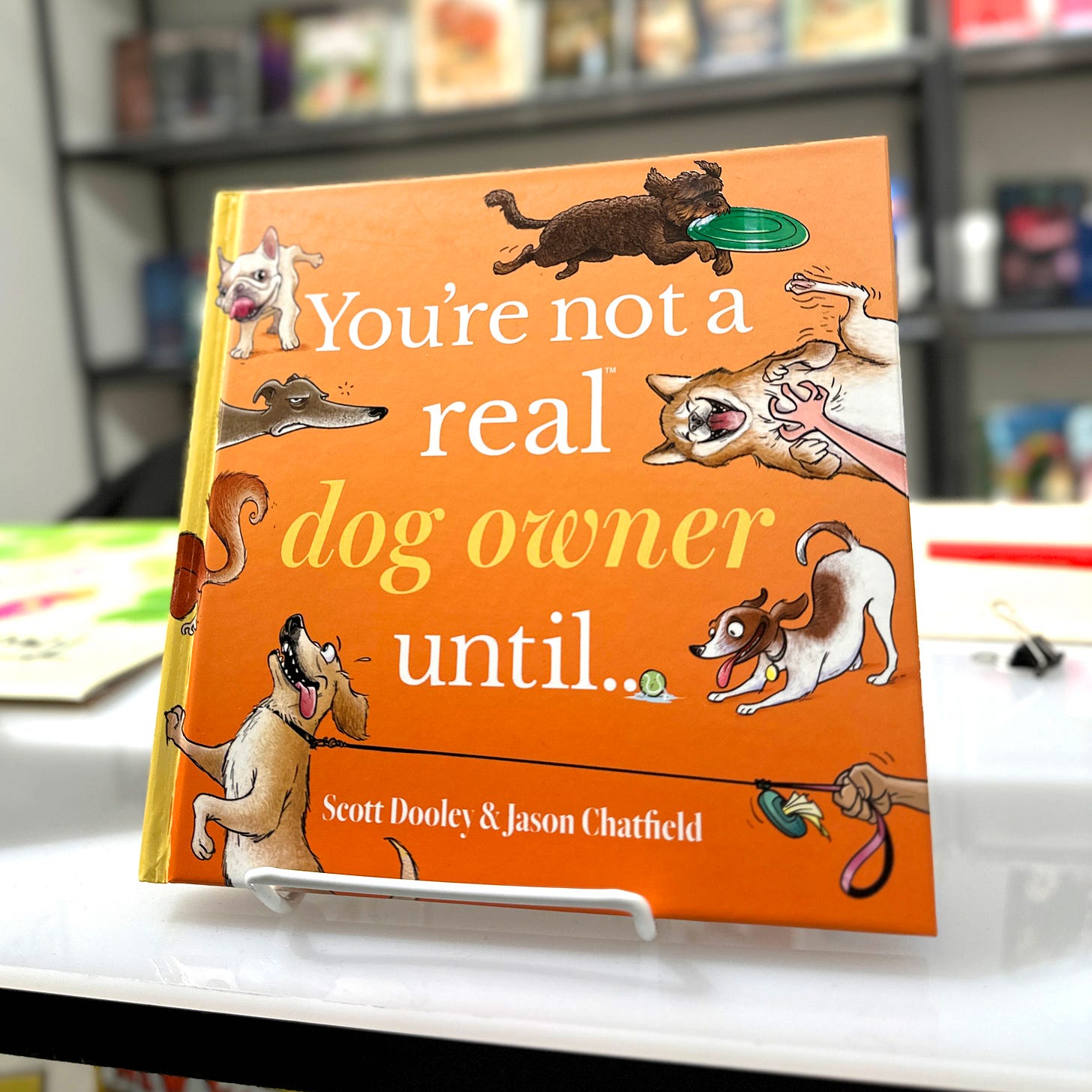
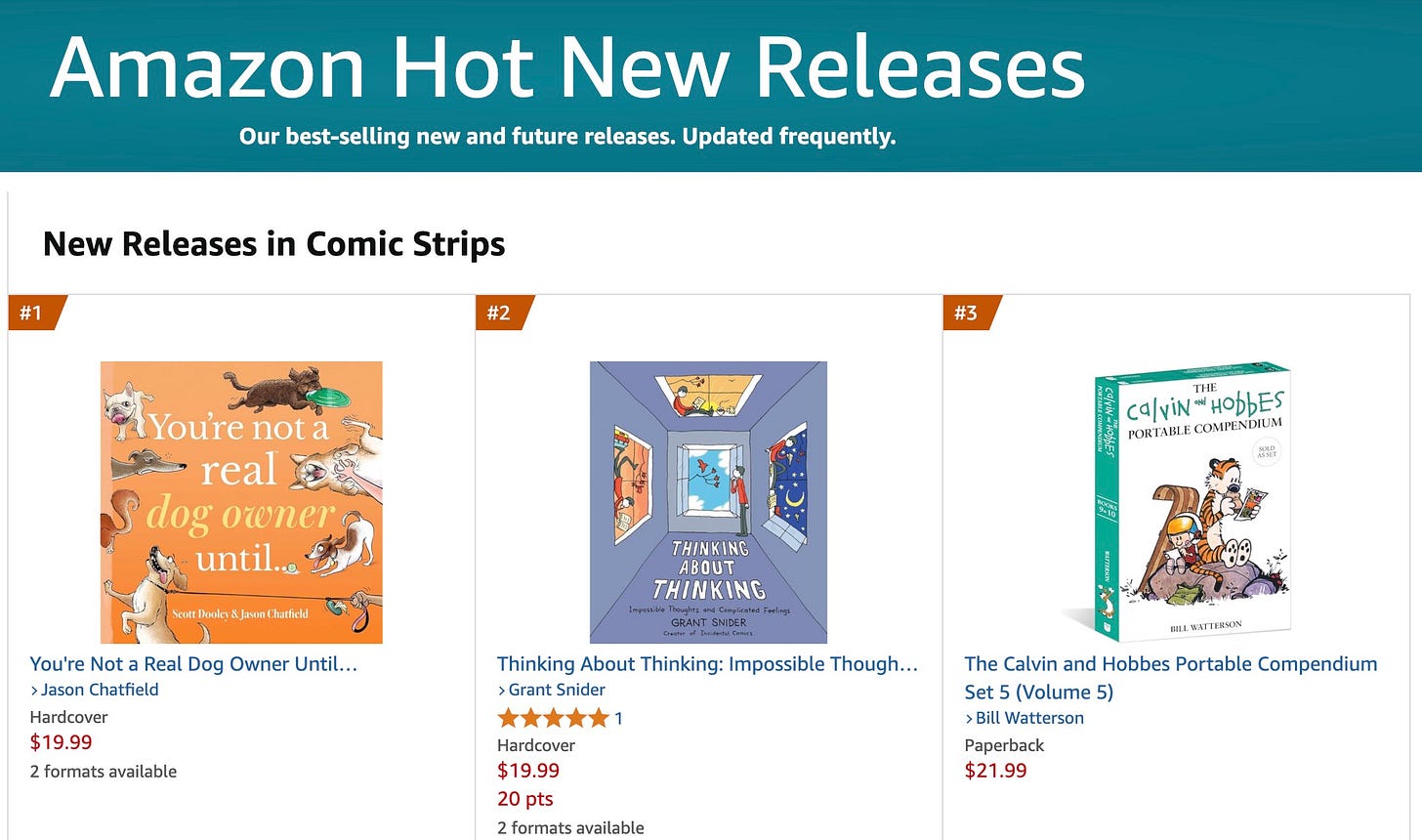


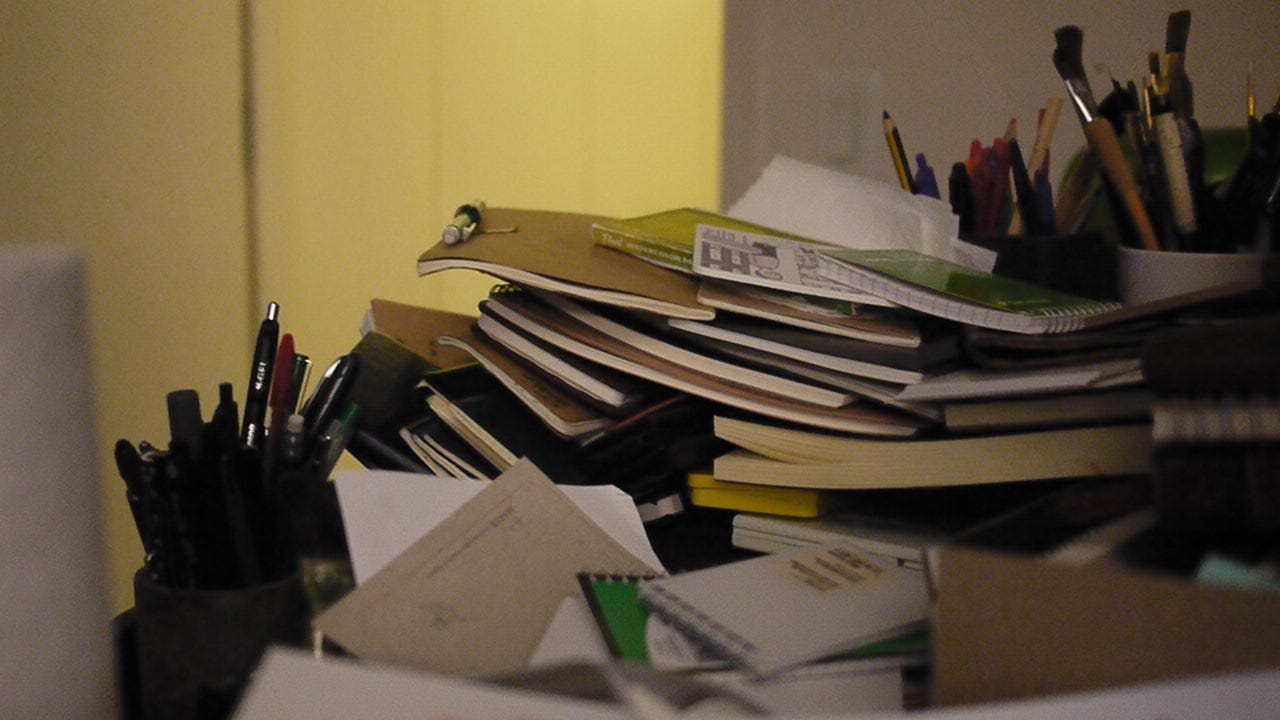

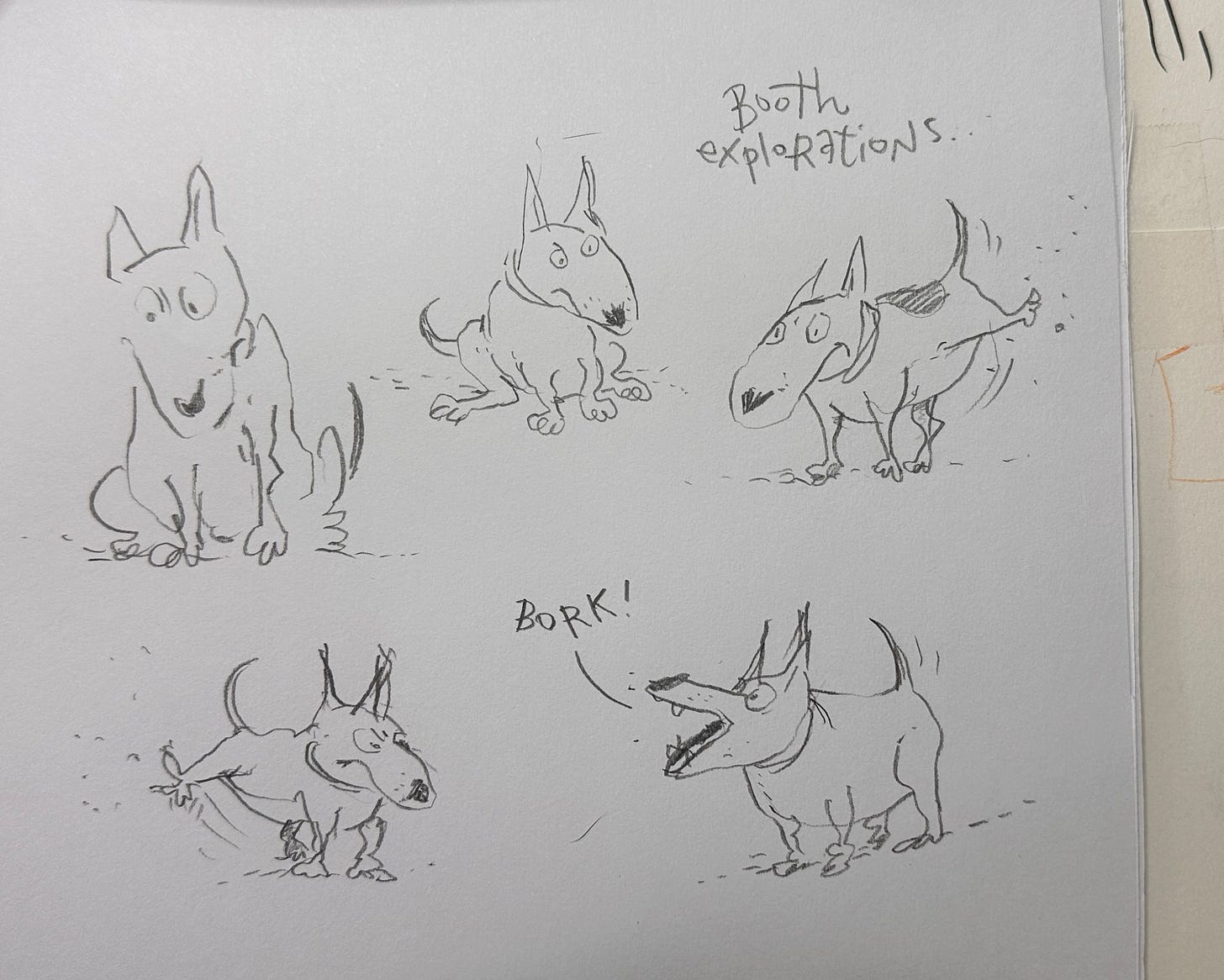




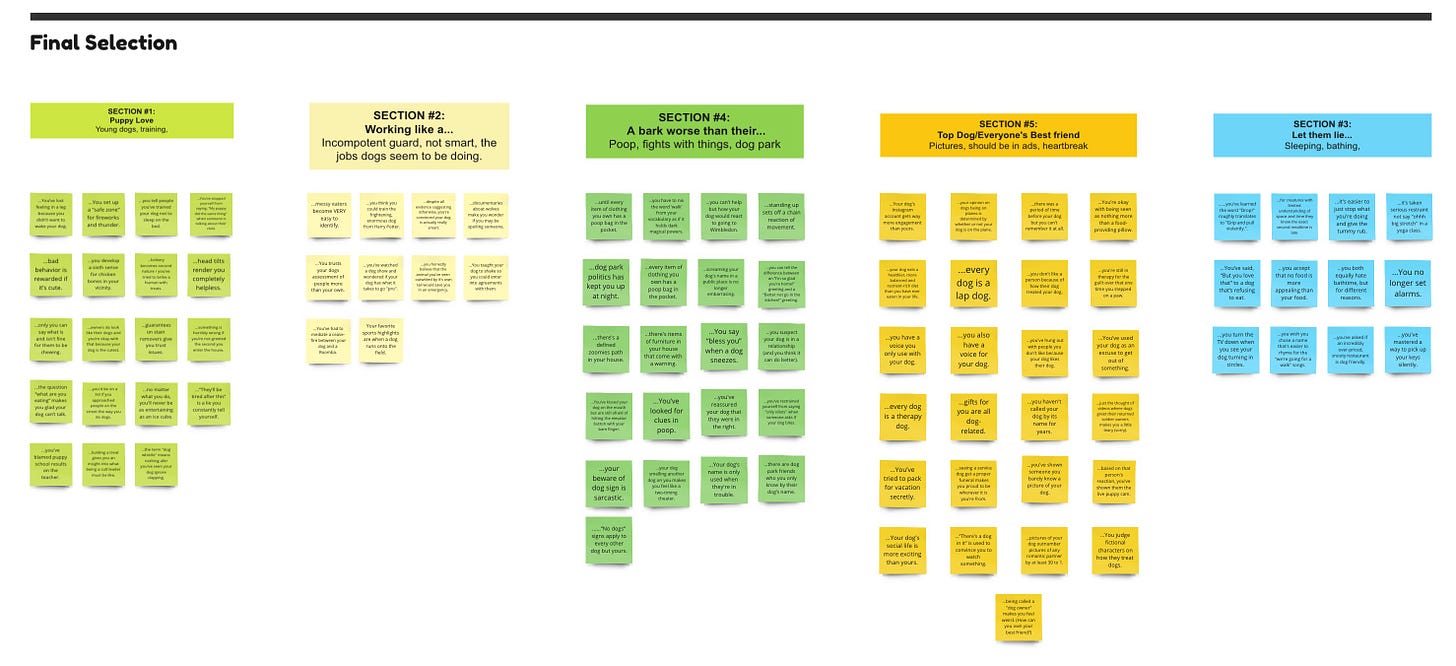







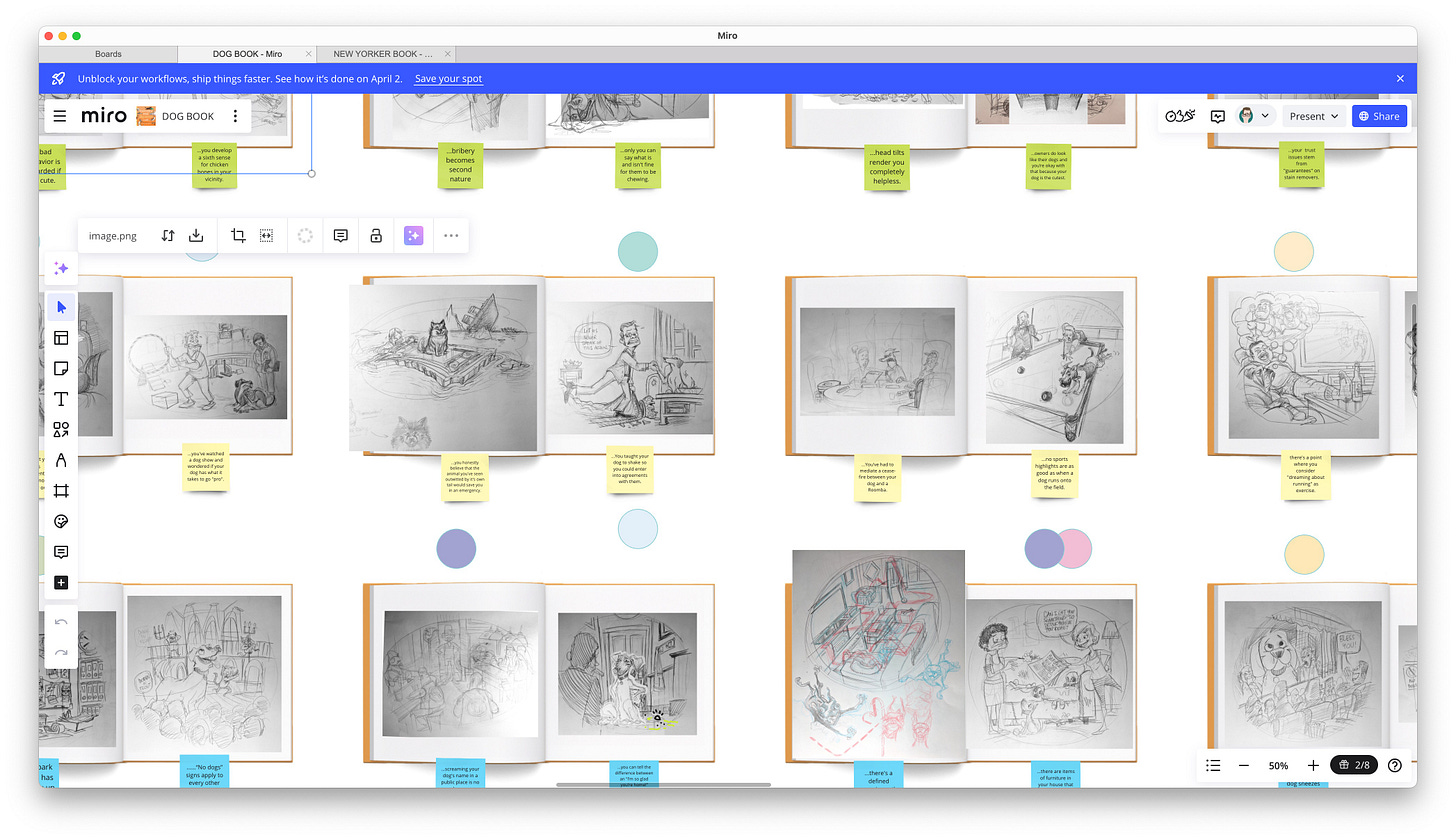




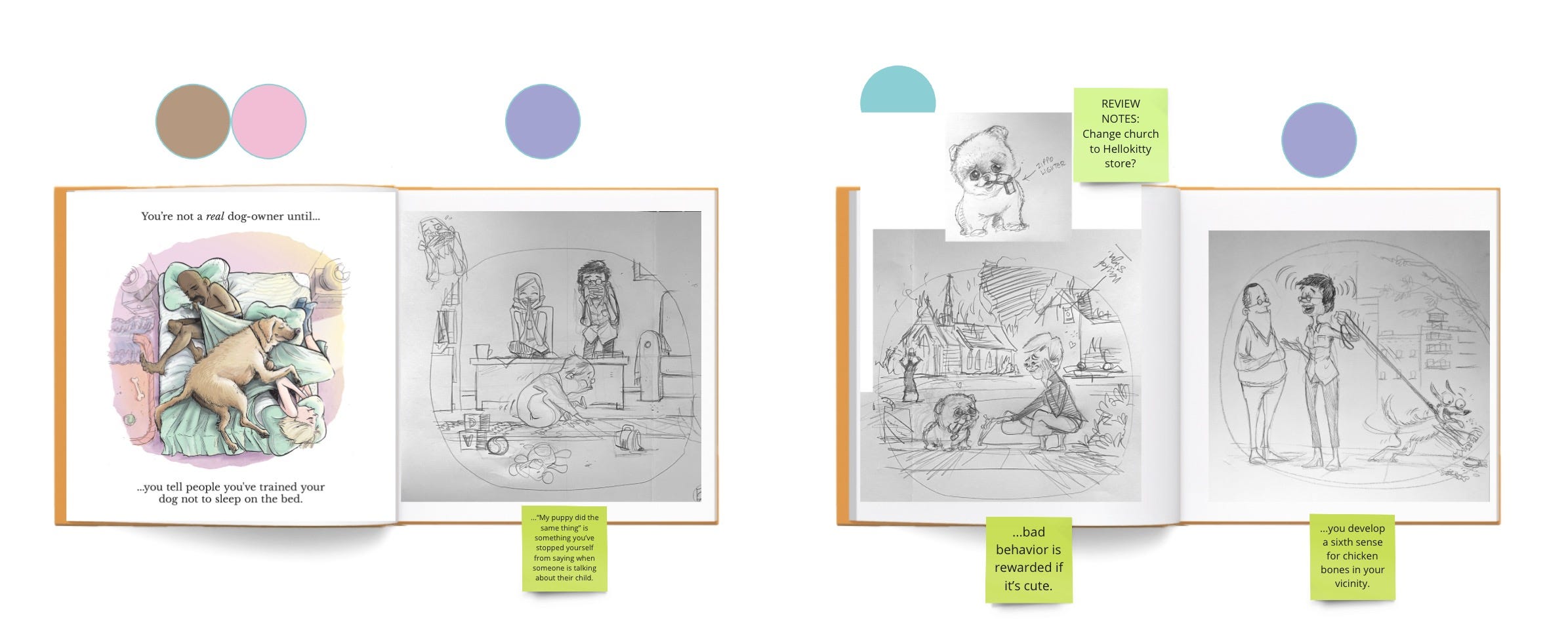


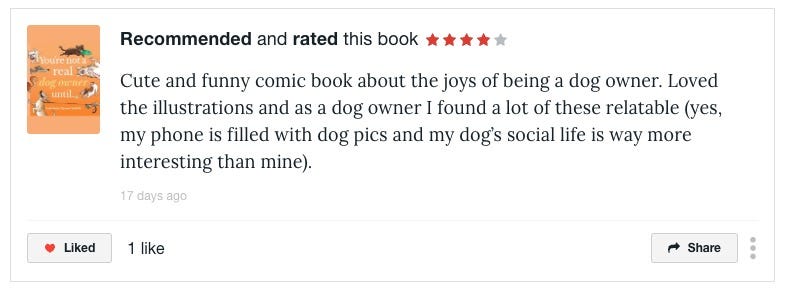
Always interesting to see how other cartoonists create!
Great post! You could do a book on the illustrated book-making process.
Best of luck with the book, and happy pub date when it comes!